Introduction
Rapid changes in economic, social and political life, including changes related to the advent of new technologies and ongoing globalisation, present significant challenges in today’s world in connection with which the OECD is developing internationally comparable indicators of skills and competences and their role in promoting individual, social and economic prosperity. To this end, OECD member countries cooperate on the development of a range of instruments designed to provide reliable and relevant measures of educational outcomes and the most appropriate ways of mass diffusion of the necessary knowledge and skills into society (Rychen & Salganik, 2003; Rychen, 2016; OECD, 2005; OECD, 2018). The growing demand of national authorities of EU countries for information focused on educational outcomes has resulted in many projects in the context of the OECD. Although their goals were interrelated, these projects operated more or less independently, with minimal conceptual and organisational coordination associated with the selection and definition of competences.
Not only were the concepts of key competences, fundamental skills, and general skills unstable in the systems of some nation-states, but the understanding of these concepts by different states showed significant differences. In addition, the implementation of key competences, key skills, etc., naturally occurred in the specific contexts of national education and training systems and therefore saw tremendous variation in the relative emphasis placed on the specification of skills/competences, on assessment and the learning process (Oates, 2002).
Key Skills
The initial ideas developed by Mertens were taken up and integrated into different cultural approaches in other European countries. Most English-speaking countries use the term basic skills or key skills. There were six key skills – communication, application of numbers, application of ICT, decision-making, teamwork and improving one’s education. However, due to the difficulties of definition and assessment, only the first three were included in the initial assessment frameworks. Key skills were considered independent and designed to expand the potential for individual flexibility, skill accumulation, and transfer (Kämäräinen, Attwell & Brown, 2002).
Key Competences
The term key competences comes from the Anglophone environment and is the successor to the term competences, which previously replaced the term basic skills. At various levels, key competences were discussed as early as the 1970s. According to Belz & Siegriest (2001), key competences represent knowledge, skills, and attitudes that go beyond specific professional knowledge, enable effective use, and are required for many different job functions and assignments. Based on research, the authors focused on the following competences: communication and cooperation, problem-solving and creativity, independence, responsibility, reliability, thinking, learning and reasoning.
In connection with education, key competences began to be discussed at the end of the 1990s, when differences in the achieved results of education raised considerable doubts about the degree of their effectiveness. In addition, the European curriculum places more and more emphasis on the successful application of knowledge and skills rather than on selling them (Eurydice, 2002). This way should lead to a better professional application of school graduates, their better inclusion in society, and thus to positive results for the European economy.
The approach based on key competences shifts the emphasis from acquiring formal qualifications to using competences in organisational contexts. In addition, this approach does not focus on individual education and turns the stress to developing organisational models of using competences and connecting different competences. Therefore, it is necessary to develop pedagogical concepts that consider education transformation within organisational settings. These pedagogical concepts can serve as a bridge between general frameworks for continuing professional education and the specific needs of a company for organisational learning and therefore function as another variant of integrated delivery (Kämäräinen, Attwell & Brown, 2002).
Key Qualifications
The third approach is based on discussions about key qualifications in German-speaking countries (Schlüsselqualifikationen). The original ideas about key qualifications emerged from a discussion of the relationship between technological change, labour market flexibility and the modernisation of education systems. The original vision was to combine flexible curriculum development, learning patterns and frameworks for flexible competence accumulation. During the discussion, the main focus was on modernising professional qualifications and curriculum renewal. Within this debate, key qualifications have been interpreted in different ways. The initial discussions enabled more practical pilot projects leading to the integration of key qualifications into VET systems. This development, in turn, led to a new era of discourse, critique and reflection on the ideas on which the key qualifications are based. Throughout the debate in German-speaking countries, key qualifications have always been linked to a vision of cultural change (Kämäräinen, Attwell & Brown, 2002).
Methodology
The paper aims to identify a set of key competencies essential for managerial practice based on the case studies from Poland. We divided the paper into four main parts: introduction and theoretical background, methodology, results and discussion, and conclusion. The main motive for the paper comes from the initial comparative analysis of the published research aimed at managerial challenges (Nadanyiova, Gajanova & Majerova, 2023), pressure (Kvasnicova, Kremenova, Fabus & Babusiak, 2016), recruitment (Bachanová & Garbárova, 2017), business excellence (Rentková & Vartiak, 2017; Gejdoš & Rentková, 2021) and relevant information (Boujelbene & Besbes, 2012; Mejri & Zouaoui, 2013).
The methodology is based on the statistics published on www.statista.com, while we aim at the following six leading research aimed at analysing managers:
- Good boss features (Sas, 2022a),
- Bad bosses’ negative behaviour (Sas, 2021a),
- Features that the bosses lack (Sas, 2022b),
- How did the bad boss become your boss (Sas, 2022c)?
- Reasons why employees do not quit despite a bad boss (Sas, 2021b),
- Health consequences of having a bad boss (Sas, 2021c).
Statista is a leading provider of market and consumer data. It constantly develops successful new products and business models, so it was chosen as the primary source of the paper’s data. For the paper, we use the term boss as a synonym for manager and features considered equivalent to competences. The paper uses analysis, synthesis, generalisation, induction and deduction to compare the research results and conclude.
Results and Discussion
As already found in our previous research paper presented at the international scientific conference (Vartiak, Jaseckova & Stieglauer, 2023), by using the VOSviewer software, we were able to identify a total of 5238 search results for topic management and topic competence. Since we want to get up-to-date results, we have only selected research carried out since 2012; in the end, there were 3300 of them. Another criterion was the occurrence of a relevant term in more than 20 cases:
- Framework,
- Relationship, impact and effect,
- Resource and firm.
We also found 78412 search results for topic management and topic capabilities. Since we want to get up-to-date results, we have only selected research carried out since 2012 in the area of management, and, in the end, there were 7540 of them. Another criterion was the occurrence of a relevant term in more than 20 cases (5 clusters – 2 dominant):
- Competitive advantage,
- Relationship and employer atmosphere,
- Impact on the supply chain,
- Innovation,
- Consequences and impacts.
Finally, we found 2101 search results for topic management and topic skills. Since we want to get up-to-date results, we have only selected research carried out since 2012, and in the end, there were all 2101 of them. Another criterion was the occurrence of a relevant term in more than 20 cases (3 clusters):
- Entrepreneur experience, learning and education,
- Competitive advantage on the market,
- Enterprise value, human resources management – i.e., a kind of managerial perspective.
To support the previous results and expand them by case studies. According to Armstrong (2017), “the majority of employees have had the displeasure of working under someone they dislike.” A survey by Glassdoor identified the ten most common bad boss traits, while the negative trait most commonly cited by workers is a disrespectful manager (43%). A negative attitude brings down 34% of respondents, while a lazy boss rounds off the top three biggest gripes with 23%. Another bad trait of managers is that they always talk about themselves (16%), have inappropriate humour (10%), come in late (10%) and leave early (10%). The rest of the managers swear (8%), have loud phone calls (8%) and provide sexist comments (7%).
In 2020, the Polish people surveyed indicated honesty as a good boss’s essential quality (46%), support for team members (41%), and credibility (38%). Positive attitude (34%), self-confidence (28%), a sense of humour (22%) and decision-making skills (22%) are other good qualities of a boss. The rest of the good boss features are presented in Fig. 1 (Sas, 2022a).
Include figures and tables within the body of your paper. DO NOT design your figures using Microsoft word in bits and pieces. This will cause the figure to be distorted during formatting and production. You have to use a drawing tool and import the figure to word.
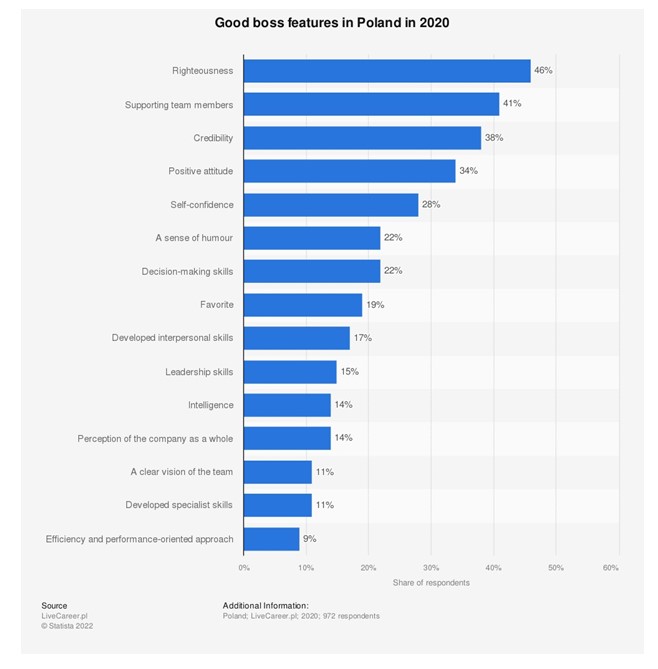
Fig 1. Good boss features in Poland in 2020
On the other hand, the survey aimed at identifying bad features of a boss. The most frequently experienced bad behaviour on the boss’s side by the Polish people indicated that the boss “is always right” (78%), the boss treated them rudely and disrespected them (76%), and the boss did not take their ideas into account (71%). The rest of the bad boss features are presented in Fig. 2 (Sas, 2021a).
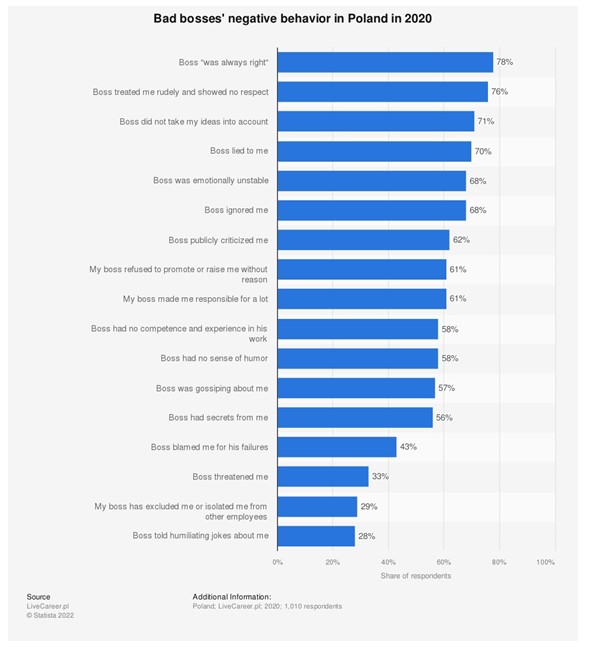
Fig 2. Bad boss features in Poland in 2020
Employees can identify not only the good and bad features of bosses, but they can also identify those features that bosses lack. From the employees’ point of view, bosses should have these features. In 2020, respondents most often indicated a sense of humour (25%), support for team members (23%), a positive attitude (20%) and credibility (20%) as features that Polish bosses lack. The rest of the features that the bosses lack are presented in Fig. 3 (Sas, 2022b).
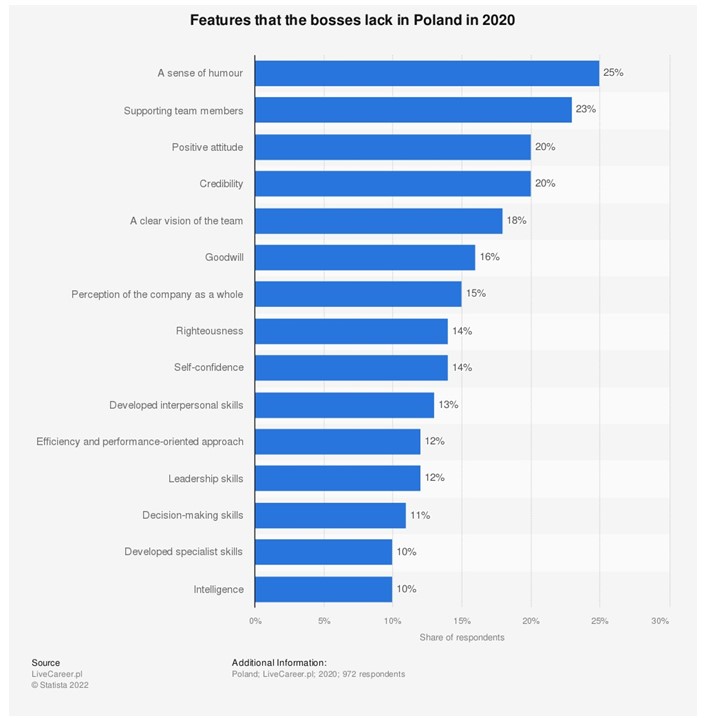
Fig 3. Features that the bosses lack in Poland in 2020
A boss’s good and bad qualities are crucial, but another important matter is who is the boss. There are different ways to become a boss, and that’s what another research study in Poland from 2020 focused on (Fig. 4). Surveyed Polish people (Sas, 2022c) most often responded that their bad boss was hired for this position (36%), was the company’s owner/manager (33%), or was promoted to this position (16%).
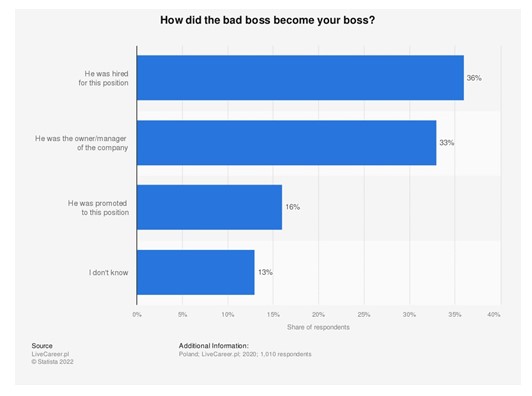
Fig 4. How did the bad boss become your boss? (Poland, 2020)
Although employees often have a bad boss and are troubled at work, few of them can change jobs because of a bad boss. A survey conducted in Poland in 2020 showed that surveyed Polish people most often decided to stay in the company despite a bad boss, because of money issues (67%) and hopes for improvement (67%). The rest of the reasons why employees do not quit despite a bad boss are presented in Fig. 5 (Sas, 2021b).
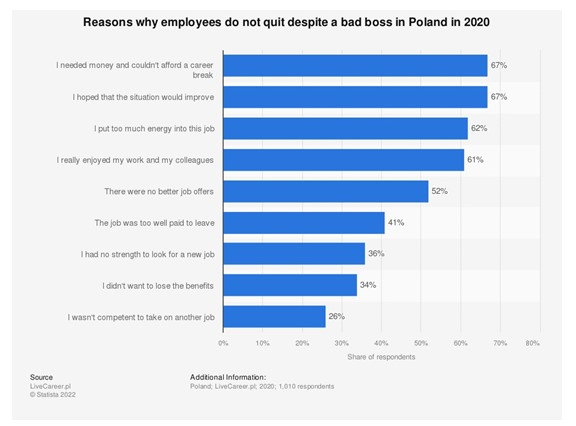
Fig 5. How did the bad boss become your boss? (Poland, 2020)
Having a bad boss and feeling uncomfortable at work is very harmful. Such a daily recurring situation can damage a person’s physical and mental health. In 2020, surveyed Polish people indicated frustration, headaches, problems with concentration, and insomnia as the most common health consequences of having a bad boss. The rest of the health consequences of having a bad boss are presented in Fig. 6 (Sas, 2021c).
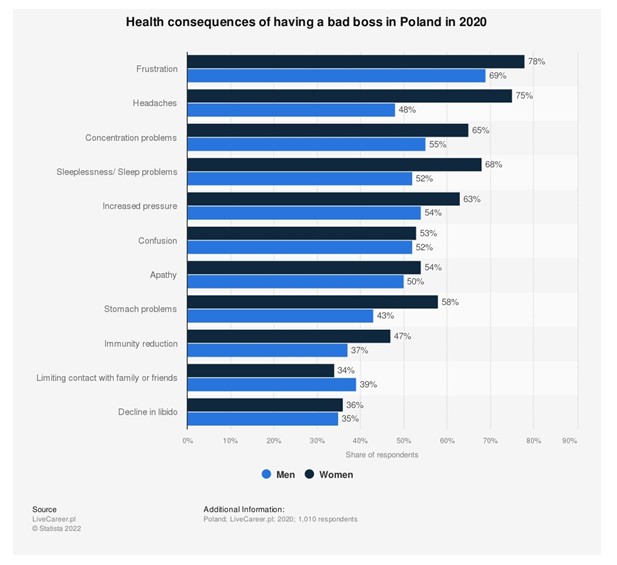
Fig 6. Health consequences of having a bad boss in Poland in 2020
Despite gender equality, it is necessary to realise that men and women perceive a bad boss in the workplace differently. Therefore, the results of the latest survey also focus on this fact.
Conclusion
Our research found many theories identifying key competencies in managerial practice. Some of them identify six main competences, such as proficient communication skills, understanding multigenerational workforce trends, providing high-impact performance feedback, focusing on employees’ career development needs, maximising the leadership strengths, advocating organisational changes necessary for developing and keeping top talent (Blum, 2014), or leadership, communication, collaboration, critical thinking, finance, project management (AMA, 2022). Another theory (McPheat, 2013) identifies managers’ seven main competences: communication, delegation, motivating others, organising and task management, patience, building effective teams, and self-development. We could continue like this to eleven, twelve, twenty, or even forty management competences. The truth is that much of that research was not scientific but philosophical. That is why, in our previous research (Vartiak, Jaseckova & Stieglauer, 2023), we tried to use scientific methods to identify a set of key competences that are important for managerial practice, including resource, relationship, change, skill.
This research is focused on case studies. The paper aimed to identify a set of key competencies essential for managerial practice based on the case studies from Poland. Based on the results of the research conducted in Poland in 2020, we were able to identify a set of key competences that are important for managers to have: righteousness, supporting team members, credibility, a positive attitude, self-confidence, a sense of humour, decision-making skills, developed interpersonal skills, leadership skills, intelligence, perception of the company as a whole, a clear vision of the team, developed specialist skills, goodwill, intelligence, efficiency and performance-oriented approach. We also identified features a manager cannot have because, as we found out, having a bad boss at work could lead to serious health problems. People often prefer to put up with a bad boss in the workplace rather than change jobs, which causes them to work for a long time in an environment that is not good for them; their motivation and work performance decrease and their number of visits to the doctor increases.
References
- (2022). 6 Managerial Skills That Will Make You Indispensable. Success Skills for Managers and Leaders. [Online], [Retrieved August 22, 2023], https://www.amanet.org/resources/success-skills/management/
- Armstrong, M. (2017). The 10 Most Common Bad Boss Traits. [Online], [Retrieved August 22, 2023], https://www.statista.com/chart/9491/the-10-most-common-bad-boss-traits/
- Bachanová, P. H. and Garbárova, M. (2017). ‘The process of improving recruitment for university studies,‘ Proceedings of the 30th International Business Information Management Association Conference, IBIMA 2017 – Vision 2020: Sustainable Economic development, Innovation Management, and Global Growth, 2017, 2017-January, pp. 2449–2459.
- Belz, H. and Siegriest, M. (2001). Key competences and their development. Prague: Portal.
- Blum, A. (2014). 6 Key Competencies of Effective Managers. [Online], [Retrieved August 22, 2023], https://trainingmag.com/6-key-competencies-of-effective-managers/
- Boujelbene, Y. and Besbes, L. (2012). ‘The Determinants of Information Asymmetry between Managers and Investors: A Study on Panel Data,‘ IBIMA Business Review, Volume 2012 (2012), Article ID 818936.
- (2002). Key Competencies. A developing concept in general compulsory education. Paris: Eurydice.
- Gejdoš, P. and Rentková, K. (2021). ‘Increasing business excellence through the implementation of effective quality management systems in the conditions of the wood processing industry in Slovakia,‘ 14th International Scientific Conference WoodEMA 2021 – The Response of the Forest-Based Sector to Changes in the Global Economy, Proceedings, 2021, pp. 17–23.
- Kämäräinen, P., Attwell G. and Brown, A. (2002). Transformation of learning in education and training Key qualifications revisited. Luxembourg: Office for Official Publications of the European Communities.
- Kvasnicova, T., Kremenova, I., Fabus, J. and Babusiak, B. (2016). ‘E-commerce user experience: Do we feel under pressure during online shopping?‘ WMSCI 2016 – 20th World Multi-Conference on Systemics, Cybernetics and Informatics, Proceedings, 2016, 2, pp. 41–44.
- McPheat, S. (2013). What Are The Top 7 Competencies Of A Great Manager? [Online], [Retrieved August 18, 2023], https://www.mtdtraining.com/blog/what-are-the-top-7-competencies-of-a-great-manager.htm
- Mejri, R. and Zouaoui, M. (2013). ‘Environmental Scanning and Its Perception by the Managers of the Tunisian Companies,‘ IBIMA Business Review, Volume 2013 (2013), Article ID 365159.
- Nadanyiova, M., Gajanova, L. and Majerova, J. (2023). ‘A SIGNIFICANT MANAGERIAL CHALLENGE OF ONLINE MARKETING IN GASTRONOMIC SECTOR DURING THE COVID-19 PANDEMIC,‘ Polish Journal of Management Studies, 27(1), pp. 258–274.
- Oates, T. (2002). ‘Key Skills/Key Competencies: Avoiding the Pitfalls of Current Initiatives,‘ Definition and Selection of Key Competencies Contributions to the Second DeSeCo Symposium. Geneva, Switzer-land, 11-13 February, 2002, pp. 169-201.
- (2005). Definition and Selection of Competencies DeSeCo. Paris: OECD.
- (2018). The future of education and skills, EDUCATION 2030. The future we want. Paris: OECD.
- Rentková, K. and Vartiak, L. (2017). ‘Emerging Markets excellence: A review of Rajiw Gandhi National Quality Award winners,‘ Proceedings of the 29th International Business Information Management Association Conference – Education Excellence and Innovation Management through Vision 2020: From Regional Development Sustainability to Global Economic Growth, 2017, pp. 705–715.
- Rychen, D. S. and Salganik, L. H. (2003). Key competencies for a successful life and a well-functioning society. Washington: Hogrefe Huber Publishers.
- Rychen, D. S. (2016). E2030 Conceptual Framework: Key Competencies for 2030 (DeSeCo 2.0). Paris: OECD.
- Sas, A. (2022a). Good boss features in Poland in 2020. [Online], [Retrieved August 16, 2023], https://www.statista.com/statistics/1186837/poland-good-boss-features/
- Sas, A. (2022b). Features that the bosses lack in Poland in 2020. [Online], [Retrieved August 16, 2023], https://www.statista.com/statistics/1186864/poland-missing-features-of-bosses/
- Sas, A. (2022c). How did the bad boss become your boss? [Online], [Retrieved August 16, 2023], https://www.statista.com/statistics/1186700/poland-bad-boss-at-work/
- Sas, A. (2021a). Bad bosses’ negative behavior in Poland in 2020. [Online], [Retrieved August 16, 2023], https://www.statista.com/statistics/1186727/poland-bad-bosses-negative-behavior/
- Sas, A. (2021b). Reasons why employees do not quit despite a bad boss in Poland in 2020. [Online], [Retrieved August 16, 2023], https://www.statista.com/statistics/1186709/poland-reasons-why-employees-do-not-quit-despite-a-bad-boss/
- Sas, A. (2021c). Health consequences of having a bad boss in Poland in 2020. [Online], [Retrieved August 16, 2023], https://www.statista.com/statistics/1186741/poland-health-consequences-of-having-a-bad-boss/
- Vartiak, L., Jaseckova, G. and Stieglauer, S. (2023). ‘Identification of Key Competences in Management,‘ 41st IBIMA conference on Business, Marketing, Management, and Human Resources Conference proceedings. Norristown : International business information management association, 2023, pp. 101-105
Copyright Notice
- Authors who publish in any IBIMA Publishing open access journal retain the copyright of their work under a Creative Commons Attribution 3.0 Unported License, which allows the unrestricted use, distribution, and reproduction of an article in any medium, provided that the original work is properly cited. No permission is required from the authors or the publishers. While authors retain copyright of their work with first publication rights granted to IBIMA Publishing, authors are required to transfer copyrights associated with commercial use to this Publisher. Revenues produced from commercial sales and distribution of published articles are used to maintain reduced publication fees and charges.








